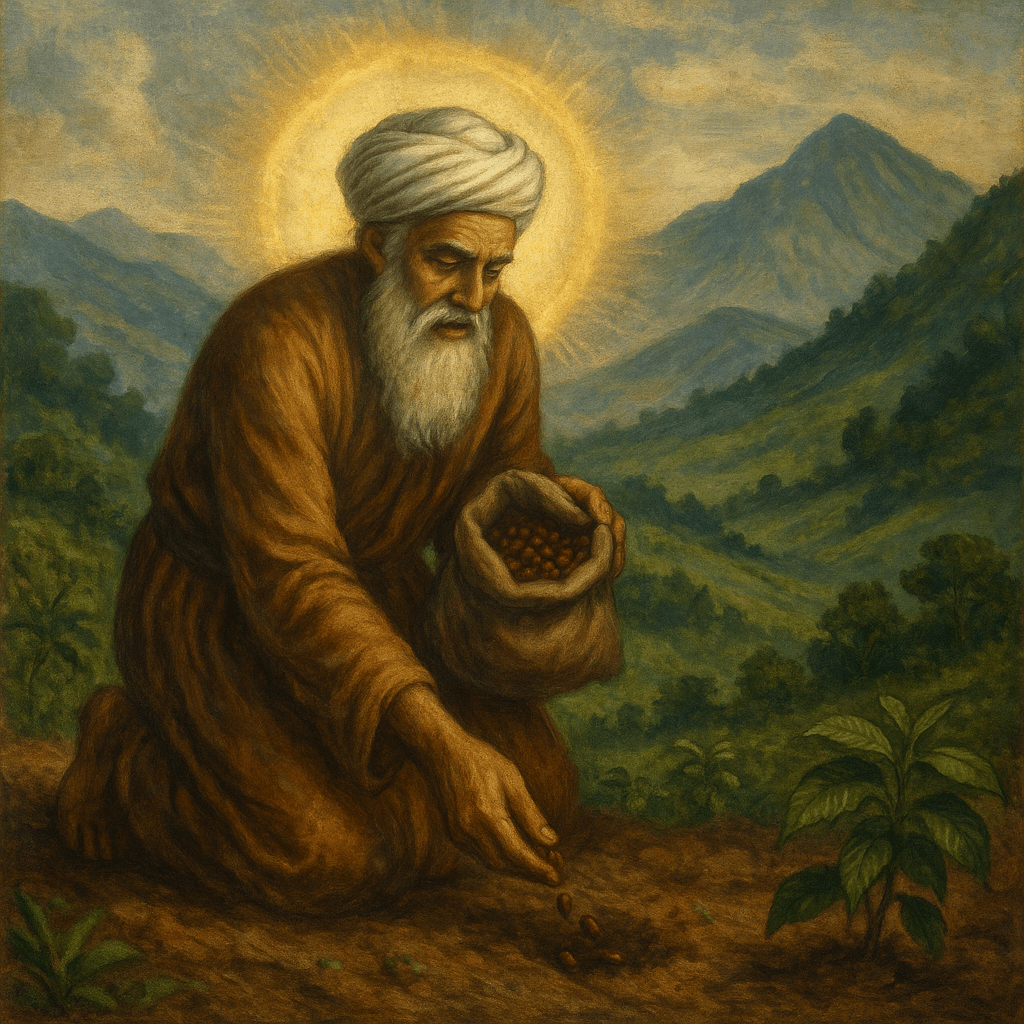Find the RIGHT Indian coffee beans.Learn to brew them perfectly.
Your guide to India's specialty coffee scene.
Celebrating Legends
The Indian Coffee Journey
A story of devotion, defiance, and discovery that transformed seven sacred seeds into India's coffee revolution
Coffee Heritage Timeline
From sacred seeds to global treasure - trace the remarkable journey of Indian coffee

1600 AD
The Seven Sacred Seeds
According to legend, Baba Budan, a revered Sufi saint, smuggles seven coffee beans from Yemen's port of Mocha, defying the Arabian monopoly and planting them in Karnataka's hills.
1700s
From Garden to Plantation
What began as backyard curiosities slowly spread across the Western Ghats. British entrepreneurs recognized the potential and began establishing India's first commercial coffee plantations.
Today
A Global Treasure
Indian coffee now thrives in harmony with biodiversity hotspots, supporting mountain communities and producing distinctive flavors that coffee connoisseurs worldwide cherish.
1600 AD
The Seven Sacred Seeds
According to legend, Baba Budan, a revered Sufi saint, smuggles seven coffee beans from Yemen's port of Mocha, defying the Arabian monopoly and planting them in Karnataka's hills—a courageous act that would birth India's coffee heritage.

Baba Budan
The Sufi saint whose sacred act of devotion planted the seeds of India's coffee revolution
1700s
From Garden to Plantation
What began as backyard curiosities slowly spread across the Western Ghats. British entrepreneurs recognized the potential and began conquering hostile forest terrain to establish India's first commercial coffee plantations.
Today
A Global Treasure
Indian coffee now thrives in harmony with biodiversity hotspots, supporting mountain communities and producing distinctive flavors that coffee connoisseurs worldwide cherish for their unique spice notes and sustainable cultivation.
According to legend, in the mist-veiled mountains of Karnataka, a quiet revolution began with an act of divine devotion. Baba Budan, returning from his sacred pilgrimage to Mecca, carried more than prayers in his heart—he bore seven precious coffee seeds, concealed against his chest, each one a seed of destiny.
What started as garden curiosities in mountain hermitages slowly spread across the shadow-dappled slopes of the Western Ghats. British entrepreneurs, recognizing the untapped potential, later ventured into challenging forest terrain, establishing plantations that would flourish beneath the protective canopy of ancient trees.
Unlike coffee grown elsewhere, Indian coffee evolved in harmony with one of Earth's 25 biodiversity hotspots. This unique environment—where coffee plants share space with cardamom, pepper, and native wildlife—creates beans with distinctive spice notes and complex flavors that whisper stories of monsoon rains and mountain mists.
The Living Legacy
Today, Indian coffee represents more than a beverage—it's a testament to sustainable cultivation and biodiversity conservation.
It serves as the economic lifeline of remote mountain communities across the Western Ghats.
Each cup connects you to four centuries of heritage, environmental stewardship, and the enduring spirit of Baba Budan's sacred mission.
What Makes Indian Coffee
Extraordinary
India's unique geography and centuries-old traditions create coffees unlike any other in the world
Sacred Growing Regions
The Western Ghats mountains across Karnataka, Kerala, and Tamil Nadu create unique microclimates in one of the world's biodiversity hotspots.
Extraordinary Flavors
Rich spice notes, chocolate undertones, and subtle fruit flavors emerge from proximity to spice plantations and shade-growing practices.
Legendary Processing
Ancient techniques like Monsoon Malabar, where beans are exposed to monsoon winds for months, create distinctive low-acid coffees.
Frequently Asked Questions
Discover everything you need to know about Indian specialty coffee